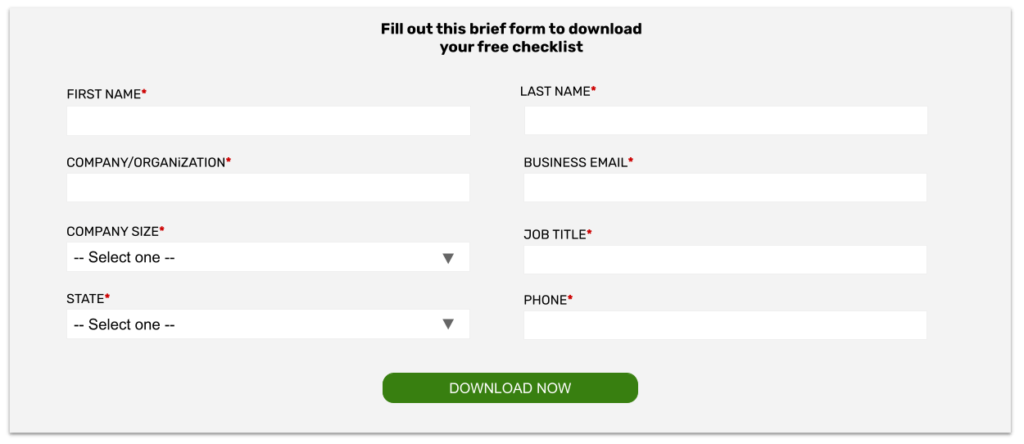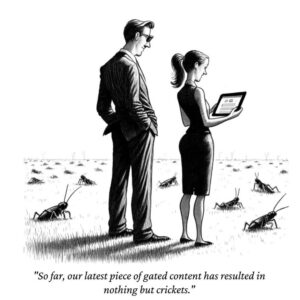You have produced an excellent ebook, a checklist, and a how-to PDF. You’ve gated the content behind various calls to action, including on a resources section of your website.
To gain access to your gated content, a website visitor simply has to click a call-to-action banner and enter some basic information into a form.
Now, you can sit back and wait for the new leads to flow in. The sales team is counting on it to bring in new business.
But, this part of your lead generation strategy is not working. No one is trading their information for your helpful content.
Why is this happening? Here are six reasons.
1. Your website doesn’t attract enough visitors
A classic marketing funnel has website visitor conversions within the top stage — and new customers at the bottom stage.
To add more prospects to the top of the funnel, you need to drive more traffic toward un-gated content, which will drive more people toward your gated content.
One way to attract more website visitors is by consistently publishing valuable blog content for your audience. Distributing your original content across multiple channels is also more critical than ever.
Consider optimizing your landing page for search so that the page directly attracts more organic search visitors.
2. You don’t have contextual calls to action
Ideally, your blog content should include calls to action related to the content the visitor just read.
For example, if someone just read a blog post that compares three leading ERP brands and the call to action is to download a CRM buyer’s checklist, the CTA is not contextual. A CTA for downloading an ERP buyer’s checklist would make much more sense.
3. Your forms require too much information
It’s not unusual to see a gated content form that looks something like this:

There’s an inverse correlation between the number of fields on a web form and the number of conversions you’ll get.
If you limit your forms to the bare minimum to qualify leads, your conversions will go up.
Here’s the difference in conversion rates from a form with just 1 field to one with 9+ fields.
— Neil Patel (@neilpatel) December 2, 2024
Even though more fields decrease conversions, if you don’t ask for enough information, you won’t be able to qualify your leads properly.
You have to find the right balance. pic.twitter.com/W3tmvbYLP9
4. You didn’t create separate landing pages for your gated content
It’s essential to have landing pages in addition to inline forms, pop-up forms, and a resource page.
One reason for creating landing pages is that you can include direct links to these pages from other parts of the web, such as social media posts.
You can also direct paid ads to your landing pages. In some cases, you may be able to attract visitors directly to a landing page through organic search.
5. People don’t see sufficient value in your offer
Visitors see your CTAs and go to your pop-ups or landing pages, but the offer isn’t compelling enough to get people to submit a form.
Before form submission, it doesn’t matter how good or bad a gated content piece is. What matters is the value the person thinks they’ll get.
This is where compelling copy comes into play. The copy on your landing page is critical for conversions. Ensure you think through your landing page copy and hire a copywriter if necessary. Alternatively, use a copywriting AI to suggest landing page copy.
Gating content can still be effective, but marketers must ensure all the components are in place.
6. The buyer market has changed
According to Jon Miller, “Our buyers are staying unknown and anonymous for longer.” There is a general indifference to gated content.


